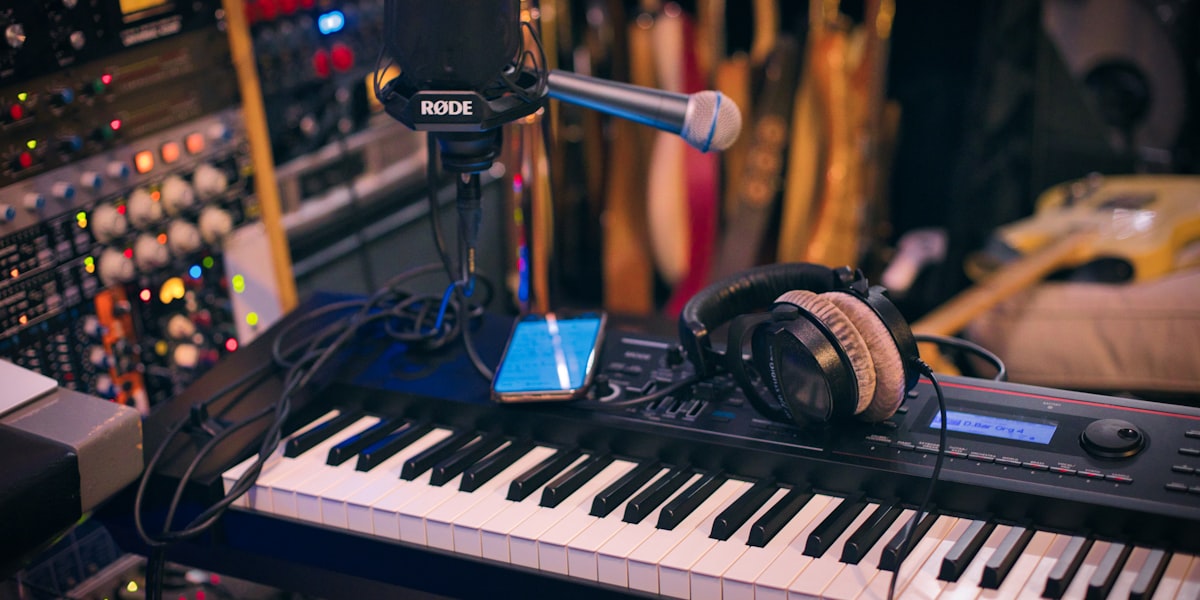Music Source Separation: The Technology Behind Stem Isolation
Deep dive into the evolution of Music Source Separation (MSS) technology, from early statistical methods to state-of-the-art waveform models. Explore how AI systems isolate individual instruments from mixed audio signals.

Understanding the Cocktail Party Problem
Music Source Separation (MSS) is the task of isolating individual instrument contributions, or "stems," from a finished musical mixture. Often referred to as the "cocktail party problem" in audio processing, this field has undergone a dramatic evolution from early statistical methods to the current state-of-the-art dominated by deep learning.
The Core Challenge
In a typical song, multiple instruments play simultaneously, their sound waves combining into a single waveform. The challenge is to reverse this process—to decompose the mixture back into its constituent parts without access to the original multitrack recording.
Historical Evolution: From Statistics to Deep Learning
Independent Component Analysis (ICA)
This statistical method assumes source signals are non-Gaussian and statistically independent. It was effectively applied in "over-determined" scenarios where the number of microphones was greater than or equal to the number of sources.
Non-Negative Matrix Factorization (NMF)
Particularly well-suited for "underdetermined" problems (more sources than microphones). NMF operates on spectrograms, modeling them as linear combinations of basis spectra representing instrument timbres and their temporal activations.
The application of deep learning has revolutionized MSS, leading to a significant leap in separation quality. The field has bifurcated into two main architectural paradigms:
Spectrogram-based Masking
Models predict masks applied to spectrograms. Limited by phase reconstruction issues and theoretical IRM ceiling.
Waveform-based (End-to-End)
Models operate directly on raw audio. Can surpass IRM oracle performance through learned representations.
State-of-the-Art Models: Performance Comparison
| Model | Organization | Domain | SDR (dB) | Key Innovation |
|---|---|---|---|---|
| Sparse HT Demucs | Meta AI | Hybrid | 9.20 | Hybrid Transformer with sparsity |
| Band-Split RNN | ByteDance | Spectrogram | 8.97 | Parallel subband processing |
| Demucs | Meta AI | Waveform | 6.80 | Synthesis-inspired U-Net |
| Spleeter | Deezer | Spectrogram | 5.91 | Fast, accessible pre-trained |
| Conv-TasNet | Columbia U. | Waveform | 6.32 | Learned basis, TCN architecture |
⚠️ Important Note on Metrics
SDR (Signal-to-Distortion Ratio) alone doesn't capture all perceptual aspects. Human evaluations reveal a trade-off: some models produce fewer "artifacts" but allow more "bleeding" between sources, while others do the reverse. A music copilot must balance these based on the specific use case.
Deep Dive: Key Architectures
Meta AI's Demucs represents a breakthrough in waveform-based separation. Its architecture features:
- Convolutional encoder/decoder inspired by music synthesis models
- Bidirectional LSTM in the bottleneck for long-range context
- Skip connections preserving fine-grained details
- First model to surpass IRM oracle for bass stem separation
Key Insight: By learning end-to-end representations, Demucs isn't constrained by STFT limitations, achieving unprecedented separation quality.
Deezer's Spleeter gained widespread adoption due to its excellent balance of performance, speed, and ease of use:
- U-Net-based spectrogram masking model
- Pre-trained models for 2, 4, and 5-stem separation
- Optimized for real-time processing
- Made high-quality separation accessible to developers worldwide
A landmark paper that demonstrated the true potential of the waveform domain:
- Learned convolutional encoder/decoder pair
- Temporal Convolutional Network (TCN) for separation
- First model to surpass ideal time-frequency magnitude masks
- Originally developed for speech separation, adapted for music
The MUSDB18 Benchmark
MUSDB18 is the undisputed benchmark for evaluating music source separation models:
Dataset Composition
- • 150 full-length tracks
- • 100 for training, 50 for testing
- • Various genres included
- • Professional production quality
Four Isolated Stems
- • Vocals
- • Drums
- • Bass
- • Other (remaining instruments)
The MUSDB18-HQ version provides uncompressed WAV format for evaluating high-fidelity models. Performance is measured using SDR (Signal-to-Distortion Ratio), with additional metrics like SIR and SAR for detailed analysis.
Practical Implementation with Hugging Face
The Hugging Face Hub provides ready-to-use pre-trained models for immediate deployment:
hugggof/demucs_extra- Trained on MusDB + 150 extra songsmonetjoe/hdemucs_high_musdbhq- High-quality Hybrid Demucs
from transformers import pipeline
import torch
# Load separation model
separator = pipeline(
"audio-source-separation",
model="hugggof/demucs_extra",
device=0 if torch.cuda.is_available() else -1
)
# Separate audio into stems
stems = separator("path/to/song.wav")Future Directions and Research
Hybrid Architectures
Combining the strengths of spectrogram and waveform domains. Models like Hybrid Demucs leverage both representations for superior performance.
Real-time Processing
Optimizing models for live performance and DAW integration. Recent work focuses on reducing latency while maintaining quality.
Beyond Four Stems
Moving towards fine-grained separation of individual instruments within the "other" category, enabling more precise remixing capabilities.
Key Takeaways
- Waveform models are the future: End-to-end approaches like Demucs consistently outperform spectrogram-based methods by learning optimal representations.
- Perceptual quality matters: SDR metrics don't tell the whole story—consider the trade-off between artifacts and bleeding for your use case.
- Accessibility drives adoption: Models like Spleeter democratized source separation by providing pre-trained, easy-to-use solutions.
- MSS enables the AI copilot: Source separation is the foundational technology for any intelligent music manipulation system.